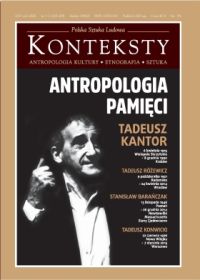Terayama Shūji – japoński Prospero czy Kaliban? Konotacje z twórczością dramaturgiczną Tadeusza Kantora
Terayama Shūji – a Japanese Prospero or Caliban? Connotations with Dramas by Tadeusz Kantor
Author(s): Nikodem KarolakSubject(s): Fine Arts / Performing Arts
Published by: Instytut Sztuki Polskiej Akademii Nauk
Keywords: Terayama Shuji; Tadeusz Kantor; theatre
Summary/Abstract: An attempt at capturing select theatrical conceptions and theories by Terayama Shūji – one of the most influential reformers of the Japanese avant-garde theatre of the 1960s-1980s, a tireless contester sometimes described as the enfant terrible of Japanese post-war art. In his spectacles and, subsequently, films Terayama toppled causal-effective schemes, thus altering the existing language of the theatre and the cinema. Contact with spectators comprised the very essence of art, which he conceived as a ritual. Members of the audience became the co-authors of the spectacle by taking a direct part in it and changing the course of the events, often in a startling fashion. The author of the article tried to focus, mainly upon the basis of Japanese sources, on the ambiguous presence of tradition vis à visthe demolition and contestation of heretofore theatrical practices. In the case of the TenjōSajiki company granting the Japanese director the name of the titular Prospero or Caliban actually depends on the given recipient of Terayama’s art, which often managed to divide the critics. On the other hand, the obvious features shared by the art represented by the Japanese director and the Theatre of Death envisaged by Tadeusz Kantor, whom Terayama met in 1974 at a symposium held in Paris and contacted upon numerous occasions, appear to be extremely interesting. Balancing along the borderline of the world of the living and the dead, the stage envisaged as a bridge to childhood, references to Craig’s concept of the Übermarionette, the dialogue of man and machine – these are only some of the examples of the geographically distant but, at the same time, close forms of the two theatres. Due to its restricted nature this article can be only a rudiment of future research pertaining to joint elements of the contemporary Polish and Japanese theatre as well as the place held by Tenj Sajiki among other theatre companies in Japan and across the world.
Journal: Konteksty
- Issue Year: 308/2015
- Issue No: 1-2
- Page Range: 374-383
- Page Count: 10
- Language: Polish
- Content File-PDF

